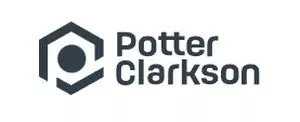A preliminary view (G 1/23) from the European Patent Office may push technology businesses in all fields to re-evaluate their commercial planning and IP strategies. The view focusses on when a commercially available product that was on sale before the filing date, but is not easily reproducible, negatively impacts patentability of new technology. We expect that the impact will be felt most strongly in the chemistry and software sectors and explore the implications below.
ANALYSABLE AND REPRODUCIBLE PRODUCTS
Under the EPC, a relevant disclosure is anything "made available" to the public, including anything on sale, before the filing date of a patent application. According to prevailing case law, a disclosure must also be "enabling" to be relevant, and a product on the market meets this requirement if someone skilled in the art would be able to analyse it and reproduce it without undue burden. In contrast, placing a product put on the market is not considered to provide an enabling disclosure of properties that would require an undue burden to determine and reproduce. The EPO is now revisiting the question of whether a product that was readily available (e.g. by virtue of being on sale) at the filing date forms part of the state of the art if its composition or internal structure could not be analysed and reproduced without undue burden before that date.
In the fields of chemistry and materials science, there may be multiple aspects of the internal structure of a product that cannot be reproduced without an extensive research programme, and that is the situation faced in G 1/23. Here, the claimed product is very similar to a commercially available copolymer, but the patentee has argued that the latter is not reproducible according to prevailing case law, despite being commercially available, because the skilled person was not able to reproduce the copolymer without knowing the actual process used to produce it.
The preliminary decision proposed a very different view, suggesting that any product on sale to the public has been disclosed in its entirety.
COMMERCIAL IMPLICATIONS
If this decision is upheld, it could raise validity questions for a number of patents. Conversely, innovators who favour trade secrets and know-how over patents may feel emboldened by this. This is because, in a situation in which a commercially available product is protected by a trade secret or undisclosed know-how instead of a patent, the new approach would make it more difficult for a competitor to obtain new patent protection covering that commercially available product.
POTENTIAL IMPLICATIONS FOR SOFTWARE
The preliminary decision notes that the term "reproduce" refers to the ability to physically reproduce the product. However, in our view this still has implications for software. The consequences may be unintended but are nevertheless critically important.
On the one hand, it is not controversial to say that providing a source code would likely constitute an enabling disclosure. On the other hand, in the current practice, providing only an executable may not constitute an enabling disclosure as long as the user is not able to reverse-engineer how the executable works. However, G 1/23 seems to imply that even if the user is not able to reverse-engineer how the executable works, making it available would still constitute an enabling disclosure.
This also leads to another question, which is whether it matters where the executable is installed. One might argue that if it is installed on the user's server, the user may do more analysis on it, perhaps using a reverse-compiler, than if they only have access to the output of an executable installed on a third-party server. Do both cases constitute enabling disclosures?
In other words, if a developer sells their software before they file a patent application, G 1/23 seems to say that this would have a negative impact on the patentability of the software in Europe.
We will need to wait for the full decision to be issued to see if it answers any of these questions. Either way, any IP strategy needs to consider this aspect from the outset.
CONCLUSION
The commercial decisions ultimately needed in view of G 1/23 could well be complex for any business operating in the technology space. Even businesses with an established business plan and IP strategy will need to think carefully before making initial sales, and perhaps look to file patent applications at an earlier stage than before. These considerations will need to include the commercial aspects, the technology, and the law. As always, our experts are on hand to explore these matters with you and to provide commercially-informed legal advice.
The content of this article is intended to provide a general guide to the subject matter. Specialist advice should be sought about your specific circumstances.



